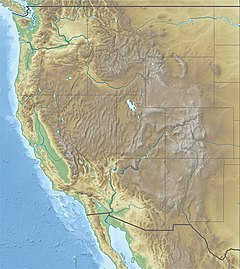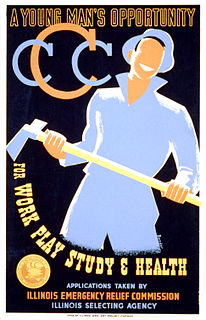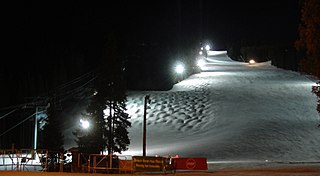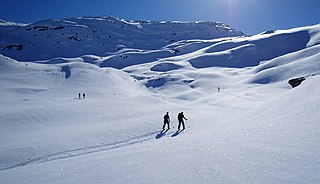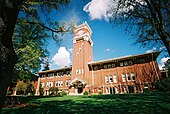| North-South Ski Bowl | |
|---|---|
Location in the western United States | |
| Location | St. Joe National Forest (Idaho Panhandle N.F.) Benewah County, Idaho, U.S. |
| Nearest city | Emida – 10 mi (16 km) Moscow – 40 mi (65 km) |
| Coordinates | 47°03′58″N116°39′36″W / 47.066°N 116.660°W Coordinates: 47°03′58″N116°39′36″W / 47.066°N 116.660°W |
| Vertical | 398 ft (121 m) |
| Top elevation | 3,788 ft (1,155 m) AMSL |
| Base elevation | 3,390 ft (1,033 m) |
| Skiable area | 28 acres (11 ha) |
| Lift system | 1 chairlift, 1 surface tow |
| Snowmaking | none |
| Night skiing | 22 acres (9 ha) |
North–South Ski Bowl was a modest ski area in the western United States, located in northern Idaho in the Hoodoo Mountains of southern Benewah County.

The Western United States is the region comprising the westernmost states of the United States. As European settlement in the U.S. expanded westward through the centuries, the meaning of the term the West changed. Before about 1800, the crest of the Appalachian Mountains was seen as the western frontier. The frontier moved westward and eventually the lands west of the Mississippi River were considered the West.

The United States of America (USA), commonly known as the United States or America, is a country comprising 50 states, a federal district, five major self-governing territories, and various possessions. At 3.8 million square miles, the United States is the world's third or fourth largest country by total area and is slightly smaller than the entire continent of Europe's 3.9 million square miles. With a population of over 327 million people, the U.S. is the third most populous country. The capital is Washington, D.C., and the largest city by population is New York City. Forty-eight states and the capital's federal district are contiguous in North America between Canada and Mexico. The State of Alaska is in the northwest corner of North America, bordered by Canada to the east and across the Bering Strait from Russia to the west. The State of Hawaii is an archipelago in the mid-Pacific Ocean. The U.S. territories are scattered about the Pacific Ocean and the Caribbean Sea, stretching across nine official time zones. The extremely diverse geography, climate, and wildlife of the United States make it one of the world's 17 megadiverse countries.

The Idaho Panhandle—locally known as North Idaho—is a region in the U.S. state of Idaho encompassing the state's 10 northernmost counties: Benewah, Bonner, Boundary, Clearwater, Idaho, Kootenai, Latah, Lewis, Nez Perce, and Shoshone. The Panhandle is bordered by the state of Washington to the west, Montana to the east, and the Canadian province of British Columbia to the north. The Idaho panhandle, along with Eastern Washington, comprises the region known as the Inland Northwest. Coeur d'Alene is the largest city within the Idaho Panhandle. Spokane, Washington is around 30 miles (48 km) west of Coeur d'Alene, and is also the location of the regional airport, Spokane International Airport. Other important cities in the region include Lewiston, Moscow, Post Falls, Hayden, Sandpoint, and the smaller towns of St. Maries and Bonners Ferry. East of Coeur d'Alene is the Silver Valley, which follows Interstate 90 to the Montana border at Lookout Pass.
Contents
Its bowl-shaped slope in the Idaho Panhandle National Forest faced northeast and the vertical drop was just under 400 feet (120 m) on Dennis Mountain, accessed from State Highway 6, south of Emida and north of Harvard. An "upside-down" ski area, the parking lot and lodge were at the top, less than a mile east of the highway, formerly designated as 95A (U.S. 95 Alternate). The access road meets the highway at its crest ("Harvard Hill"), just under 3,600 feet (1,100 m), and climbs about two hundred feet (60 m); the border with Latah County is approximately two miles (3 km) south.
Idaho State Highway 6 (SH-6) is a state highway in northern Idaho running from the Washington state line near Potlatch to Santa. It is 40.645 miles (65.41 km) in length and generally runs southwest to northeast

Emida is a small unincorporated community in Benewah County, Idaho, United States, located on the east side of State Highway 6.

Harvard is an unincorporated community in the northwest United States, on the Palouse of north central Idaho in Latah County.
